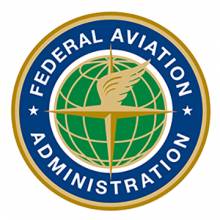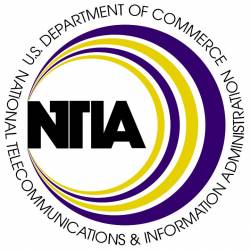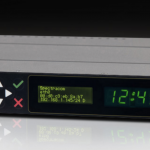The White House has thrown its support behind a proposal to privatize the nation’s air traffic control (ATC) system as part of its plan to improve the country’s infrastructure.
The administration is seeking to create a nonprofit organization empowered to take over the ATC system from the Federal Aviation Administration (FAA) and finance its operations by charging fees to flyers. The new group would also be expected to reach out to the financial markets and borrow against that income stream to support, and hopefully accelerate, ATC modernization.
The White House has thrown its support behind a proposal to privatize the nation’s air traffic control (ATC) system as part of its plan to improve the country’s infrastructure.
The administration is seeking to create a nonprofit organization empowered to take over the ATC system from the Federal Aviation Administration (FAA) and finance its operations by charging fees to flyers. The new group would also be expected to reach out to the financial markets and borrow against that income stream to support, and hopefully accelerate, ATC modernization.
"Since the early days of commercial air service, the federal government has owned and operated the United States air traffic control system. Yet, more than a half a century later, the government is still using much of the exact same outdated technology," President Donald Trump told a gathering in the White House where he announced the plan on June 5.
There is no question that the path toward modernization has been slow. In a September 30 letter, Calvin Scovel, the Department of Transportation’s inspector general, described the changes to and slippages in the NextGen program, the FAA’s air traffic modernization effort. After spending nearly $7.4 billion since 2003, Scovel wrote, the completion date for the program remains unclear. Part of the reason for that, he told Rep. Bill Shuster, the chairman of the House Committee on Transportation and Infrastructure, is that the FAA’s vision for the program —including its priorities and requirements — continues to evolve.
"FAA shifted its NextGen focus to implementing four high-priority capabilities in the near term based on 2013 recommendations from the aviation industry," Scovel said. "These include (1) advancing performance-based navigation (PBN), (2) improving access to closely spaced parallel runways, (3) enhancing airport surface operations, and (4) developing data communications capabilities between the cockpit and air traffic control."
The agency had made progress in all areas, Scovel, said but delays continue —especially with implementing performance-based navigation. PBN is the capability that, among other things, is expected to boost the number of departures from an airport and enable more efficient, point-to-point flights.
The costs for NextGen have also surged. What had been initially expected to be a $20 billion program could now cost as much as $100 billion, said Scovel, citing a 2003 report commissioned by the multi-agency Joint Planning and Development Office (JPDO).
Falling Behind
The FAA is unable to keep pace with the technological changes around it, said Secretary of Transportation Elaine Chao.
"I was deputy secretary of transportation in 1989," Chao told a June 8 hearing before the House Subcommittee on Transportation and Infrastructure. "Coming back to the Department of Transportation in 2017, I hear the same arguments and the same concerns expressed about the air traffic control system and the level of technology. So, while progress is made, it’s not fast enough in an accelerated environment where change is occurring so rapidly."
The FAA as a whole and modernization in particular have suffered from their reliance on the Airport and Airway Trust Fund, a dedicated pool of money filled by ticket taxes and other largely travel-related fees that shrinks or swells with the economic tides.
“The funding for the FAA has cycles based on the taxes that are taken in,” said Jim Williams, who spent six years coordinating and integrating NextGen’s engineering work as the program’s director of engineering services. “So, any time there’s a dip in the economy and there’s less air travel, then there’s less money available. That funding stream fluctuating up and down has made it very difficult to modernize the system." Williams is now with the Dentons law firm; he spoke with Inside GNSS last year.
Also, even though the trust fund money is dedicated to aviation, it still has to go through a politically tangled, congressional allocation process.
"There is an Aviation Trust Fund there, which we cannot use, even though it’s got huge surpluses in there … because it’s not been appropriated,” Chao told the Senate Commerce Committee. The uncertainty of the budget process, she said, "impedes the ability of the FAA to plan further ahead. So this whole issue about funding certainty is tied in with why the separation would be good to maintain a more robust Air Traffic Control System."
Management
The new entity would be run by an initial board of 13 members, said Chao, which would be chosen by the Secretary of Transportation in a process intentionally crafted to create a diverse group of stakeholders.
"It is not controlled by the airlines," Chao insisted, responding to the concerns of lawmakers who reflected the perspectives of rural officials and the general aviation (GA) community. GA pilots and small airports fear an airline-controlled ATC system would leave other users of the airspace paying more for less access to the skies.
In March, Inside GNSS reported on how some opponents to privatizing ATC were voicing their concerns. That full article can be found here.
Despite Chao’s assurances they may have good reason to be worried.
According to the White House ATC principles that 13-member board described by Chao would only be in place for the transition period — which the administration wants capped at three years — plus the first year of operation. After that it’s subject to change.
"After this time, decisions about Board constitution and members’ terms should be left to the discretion of the Board," the White House wrote. "Once the initial Board members are nominated, no group should have an exclusive right to name successor Board members."
"We all know it’s the airlines that are going to run it," Rep. Michael Capuano, D-Mass., told Chao.






